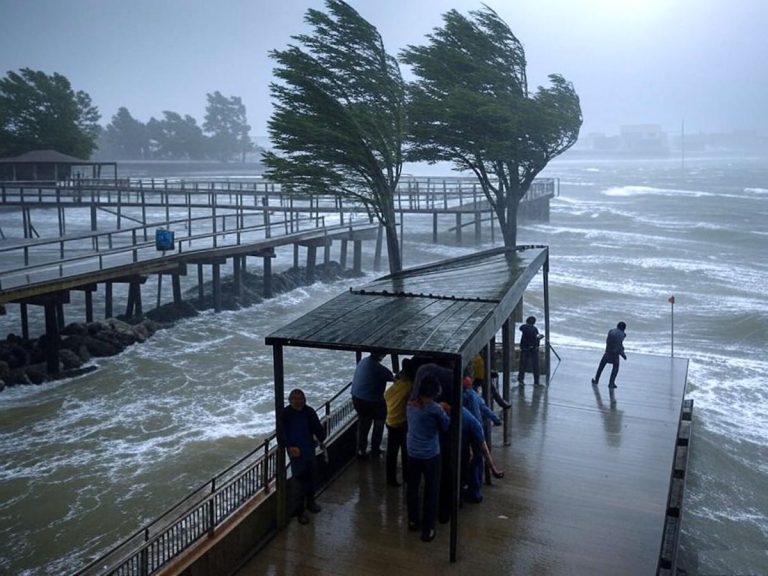
As you can see in the actual poster [below] [emphasis, links added]
like a movie poster [below]where the hurricane spins the wrong way, Evidence and research don’t always fit the narrative.

A pseudoscientific cottage industry has sprung up linking nearly every famous hurricane to climate change. Today, I look at recent efforts to attribute hurricanes to greenhouse gas emissions.
The impact of climate change on hurricanes is said to be huge. Here are some examples for 2024:

Let’s take a closer look at what’s behind these press releases. Like the hurricane spinning the wrong way in Al Gore's movie poster, The attribution technique is obvious and can be seen by anyone who cares to look.
The first technique – attribution inflation
Earlier this month, Tropical Cyclone Chido made landfall in Mayotte, part of the archipelago between Madagascar and the African continent, before going inland across Mozambique. Chido was a small but powerful tropical cyclone that killed nearly 100 people.
In the days following the storm, the Grantham Institute at Imperial College London issued a press release stating:
Wow, 40% – that’s a big number!
It is approximately an order of magnitude larger than the most extreme IPCC AR6 predictions of changes in tropical cyclone intensity in 2100.
It turns out that 40% is actually less than 3%.
Here's the trick: A press release from Imperial College stated that storms like Chido have increased from a once-in-13.9-year event to a once-in-10.1-year event——
On the surface, this means Storms like Cyclone Chido are 2.8% more likely (i.e. 10% – 7.2%). This doesn't sound too scary.
In different contexts, new york times explains that “percentage change values may give a misleading impression of what is really happening.” Indeed.
Today, we are already seeing the effects of climate change on floods, fires and storms. And the temperature keeps rising. As much as a quarter of the world may be uninhabitable by the end of the century. —Grantham Foundation 2024
The second trick – avoiding the problem
Imperial College's method of attribution assumes the conclusion it seeks to prove. They do this by simply assuming that every storm is made stronger due to warmer oceans, which indeed have warmed due to increasing carbon dioxide and other greenhouse gases in the atmosphere.
Taking this as a starting point, it is straightforward to conclude that climate change makes recent storms more likely to occur. Imperial College explains:
Pretty simple, right?
For example, they provide an example of an approach applied to Typhoon Haiyan (2013, Philippines) where:
Wow! Using the “percent of percents” technique to characterize an increased likelihood means storm like haiyan 7,000% chance Due to climate change.
The problem with assuming a direct relationship between sea surface temperature and hurricane likelihood and return periods is that: Tropical cyclones are not only affected by ocean temperatures but also by many environmental factors.
The basic theory of hurricane intensity was developed by Kerry Emanuel of MIT in the 1980s to describe what he called hurricane intensity maximum potential intensity Tropical cyclone.
…maintains an intensity close to maximum intensity for any appreciable amount of time, even if the underlying intensity remains high. This points to flaws in the notion, arising from idealized model studies, that tropical cyclones can maintain nearly steady states and shows that most storms eventually encounter adverse environmental influences, such as vertical wind shear or storm-induced ocean surface cooling, even when they remain over warm ocean water.
But let's look at Imperial College's conclusion, the annual likelihood of a Chido-like storm increases from 7.2% to about 10%.
According to ChatGPT, as you can see in the coin toss example below, it's over 2,100 years old.

Even if a storm like Chido is now 2.8% more likely, it would take a very, very long time to detect that change. Perhaps this is why hypotheses are favored over evidence.
Tip Three – Ignore the Evidence

In fact, as shown in the figure, Over the past 30 years, no ocean basin has experienced an increase in the destructiveness of tropical cyclones.
Tu et al. Explanation (emphasis added):
Here, we use the power dissipation index to study changes in global tropical cyclone destructiveness and find: which is almost entirely due to a reduction in the frequency and duration of tropical cyclones in the basin.
The Honest Broker is written by climate expert Roger Pielke Jr and is reader-supported. If you value what you read here, please consider subscribing and supporting the work.
Read the break from The Honest Broker
